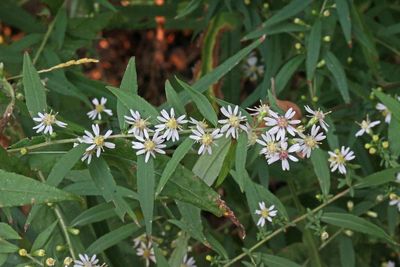Calico Aster Plant Info
Calico aster (Symphyotrichum lateriflorum) is a perennial wildflower which is native to the eastern United States. Most often occuring in USDA zones 4 through 8, this member of the aster family rewards growers with a profusion of blooms in late summer and into early fall. Although individual calico aster flowers are no larger than half an inch (1.5 cm.), large, white clusters of the flowers bloom up and down the length of each stem, making this plant a beautiful addition to ornamental flower borders. Often reaching heights of 4 feet (1 m.) tall, well-established plants require little to no care or maintenance.
How to Grow Calico Asters
Also known as woodland aster, these plants prefer a well-draining location which offers partial shade during the hottest parts of the day. Natural growing calico aster plants are often found near roadsides, in low-lying areas, and near the edges of forests. When choosing a final planting location, consideration should be taken in regards to soil moisture. Ideally, these perennials should be planted where soils remain relatively moist. However, be sure to avoid excessively soggy soil, as this could lead to root rot. While these plants can be purchased and transplanted into their final locations, finding locally available plants may be difficult. Luckily, calico aster plants are easily started from seed. There are several options when choosing to start this plant from seed. It can be started indoors in seed trays as well as directly sown in the garden. Sow the seeds into flats and place in a warm location. When seeds have germinated, harden them off, and transplant into their final location after all chance of frost has passed. Since the seed does not require any special treatment to germinate, growers also have the option of direct sowing into the landscape after all chance of frost passed. Regardless of which germination method chosen, ensure that the perennials are situated in a nutrient-rich area, as plants can be heavy feeders. Some perennial flowers, when started from seed, require time to become established. Newly transplanted seedlings may not flower the first year after planting. Once established, and provided its current growing conditions are suitable, little calico aster care is needed.
